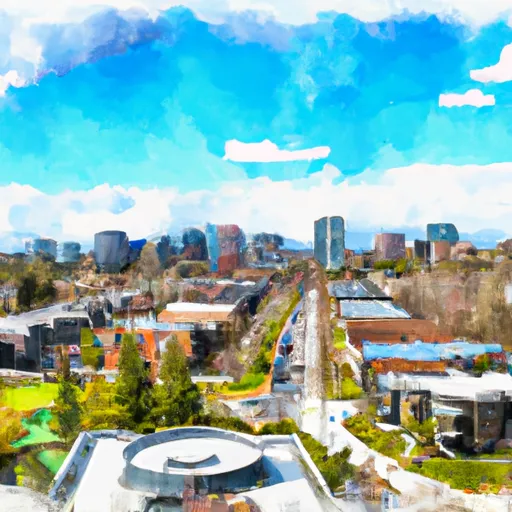-
 Snoflo Premium
Snoflo Premium
Get unlimited access to all our content
With no Ad interruptions! - Start Your Free Trial Login with existing account
Redmond
Eden Index
Climate
10.0
•
Recreation
3.1
•
Community
7.1
•
Safeguard
6.8/10

Redmond, Washington is located in King County in the Pacific Northwest region of the United States. The city experiences a temperate oceanic climate, characterized by mild, wet winters and warm, dry summers. Average temperatures range from 35°F (2°C) in winter to 75°F (24°C) in summer, with rainfall spread throughout the year.
Hydrologically, Redmond is part of the greater Lake Washington watershed, with the Sammamish River running through the city. The river offers opportunities for boating, fishing, and kayaking. Redmond is also surrounded by several lakes, including Lake Sammamish and Lake Washington, which provide additional recreational activities such as swimming, paddleboarding, and picnicking.
Outdoor enthusiasts will find a plethora of options in Redmond. The city is home to numerous parks and trail systems, including Marymoor Park, the largest park in King County. This 640-acre park offers biking and walking trails, a climbing wall, a dog park, a velodrome, and hosts various events throughout the year. The nearby Cascade Mountains provide opportunities for hiking, skiing, and snowboarding, while the Sammamish River Trail and the Burke-Gilman Trail are popular for walking, biking, and jogging.
In summary, Redmond, Washington offers a mild climate, beautiful hydrological features, and a wide range of outdoor activities, making it an ideal destination for nature lovers and adventure seekers.
What is the Eden Index?
The Snoflo Eden Index serves as a comprehensive rating system for regions, evaluating their desirability through a holistic assessment of climate health, outdoor recreation opportunities, and natural disaster risk, acknowledging the profound impact of these factors on livability and well-being.
Climate Health Indicator (CHI): 10.0
Redmond receives approximately
1087mm of rain per year,
with humidity levels near 65%
and air temperatures averaging around
11°C.
Redmond has a plant hardyness factor of
8, meaning
plants and agriculture in this region tend to thrive here all year round.
By considering the ideal temperature range, reliable water supplies, clean air, and stable seasonal rain or snowpacks, the Climate Health Indicator (CHI) underscores the significance of a healthy climate as the foundation for quality living.
A healthy climate is paramount for ensuring a high quality of life and livability in a region, fostering both physical well-being and environmental harmony. This can be characterized by ideal temperatures, reliable access to water supplies, clean air, and consistent seasonal rain or snowpacks.
Weather Forecast
Streamflow Conditions
Puget Sound
Area Rivers
Puget Sound
Snowpack Depths
Puget Sound
Reservoir Storage Capacity
Puget Sound
Groundwater Levels
Recreational Opportunity Index (ROI): 3.1
The Recreational Opportunity Index (ROI) recognizes the value of outdoor recreational options, such as parks, hiking trails, camping sites, and fishing spots, while acknowledging that climate plays a pivotal role in ensuring the comfort and consistency of these experiences.
Access to outdoor recreational opportunities, encompassing activities such as parks, hiking, camping, and fishing, is crucial for overall well-being, and the climate plays a pivotal role in enabling and enhancing these experiences, ensuring that individuals can engage in nature-based activities comfortably and consistently.
Camping Areas
| Campground | Campsites | Reservations | Toilets | Showers | Elevation |
|---|---|---|---|---|---|
| Tolt MacDonald Park | 40 | 67 ft | |||
| Flowing Lake County Park | None | 646 ft |
Nearby Fishing
Nearby Ski Areas
Catastrophe Safeguard Index (CSI):
The Catastrophe Safeguard Index (CSI) recognizes that natural disaster risk, encompassing floods, fires, hurricanes, and tornadoes, can drastically affect safety and the overall appeal of an area.
The level of natural disaster risk in a region significantly affects safety and the overall livability, with climate change amplifying these risks by potentially increasing the frequency and intensity of events like floods, fires, hurricanes, and tornadoes, thereby posing substantial challenges to community resilience and well-being.
Community Resilience Indicator (CRI): 7.1
The Community Resilience Indicator (CRI) recognizes that education, healthcare, and socioeconomics are crucial to the well-being of a region. The CRI acknowledges the profound impact of these elements on residents' overall quality of life. By evaluating educational resources, healthcare accessibility, and economic inclusivity, the index captures the essential aspects that contribute to a thriving community, fostering resident satisfaction, equity, and social cohesion.

